
* Original ca. 1940's: Model of the Zsolnay Factory's Bull Fountain.
* Zsolnay marks on base: This is the iconic Zsolnay factory mark, and the five towers represent the city of Pécs, where the factory is located.
* Authentication: Absolutely guaranteed authentic.
* Condition: In original condition without any nicks, breaks or cracks.
* Size: 5.5" high by 3" max. width.
* Dating: The combination of this shield-style logo and the "Made in Hungary" imprint places this piece as being made after 1940, likely 1940's to the 50's.
* Note of Interest: Produced during the late Art Deco period but still echoing the earlier Art Nouveau design language that the Zsolnay factory was famous for. Valuations for these ceramic fountains can and do vary, depending on their condition and the vibrancy of its iridescent 'eosin' glaze finish.
Though they are not made from true porcelain in the traditional, translucent, high-fired sense, they are made from pyrogranite or high-fired earthenware -stoneware, depending on the piece's intended use, whether for indoor decorative versus outdoor architectural use. The 'eosin' glaze was developed specifically for use on the heavier, more sculptural ceramics.
1940's Eoisin glaze Zsolnay Bulls Head Fountain
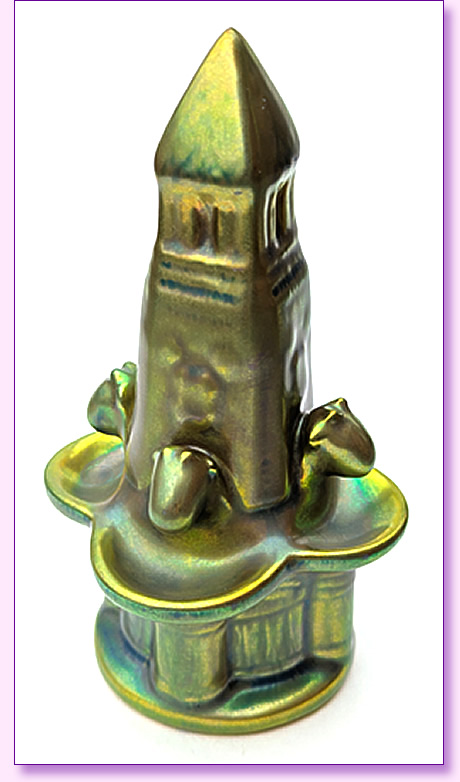
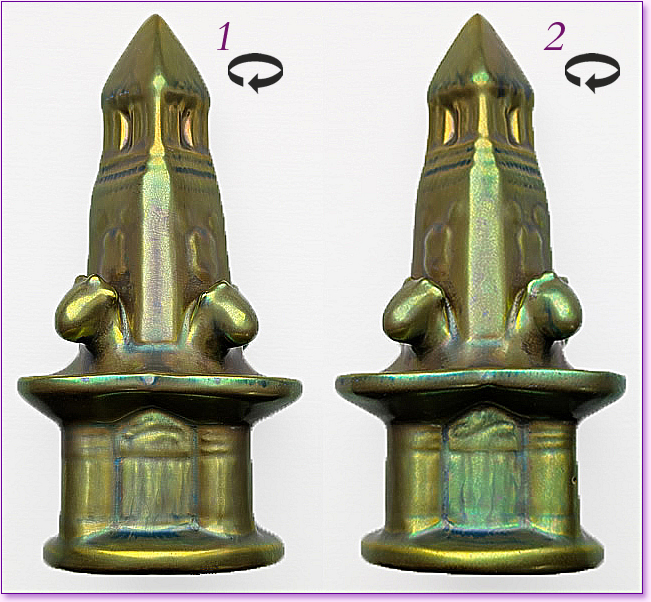
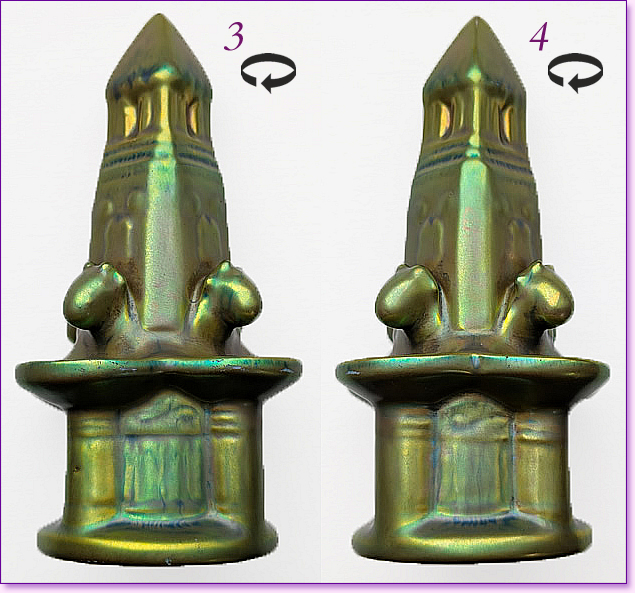
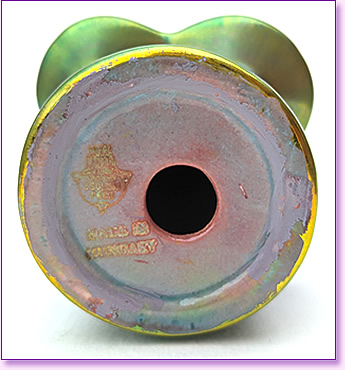
![]()
1940's Vintage Zsolnay Eosin Glaze Bull's Head Fountain Ceramic
![]()
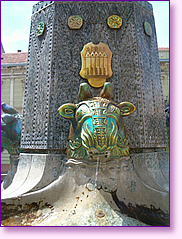 Founded in 1853 in Pécs, Hungary, the Zsolnay factory began as a small family ceramics workshop. It was taken over in 1863 by Vilmos Zsolnay, who transformed it into one of Europe’s leading art ceramic manufacturers.
Founded in 1853 in Pécs, Hungary, the Zsolnay factory began as a small family ceramics workshop. It was taken over in 1863 by Vilmos Zsolnay, who transformed it into one of Europe’s leading art ceramic manufacturers.
In the late 19th century, Zsolnay became internationally renowned for innovation, especially after introducing the eosin glaze in the 1890s. This glaze, with its iridescent metallic colors (greens, reds, purples, golds), became the company's signature and was closely tied to the Art Nouveau/Szecesszió movement.
Zsolnay works were showcased at major world exhibitions, including Paris 1878 and 1900, Vienna 1873, and Turin 1911, earning international acclaim. The factory also produced architectural ceramics, adorning buildings in Hungary and across Europe.
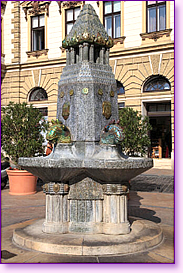 During the World Wars and Communist era, the company faced nationalization and shifting production toward more industrial ceramics. Despite hardships, it preserved many of its artistic traditions.
During the World Wars and Communist era, the company faced nationalization and shifting production toward more industrial ceramics. Despite hardships, it preserved many of its artistic traditions.
After the fall of communism, Zsolnay was revitalized, and today it continues to produce both traditional eosin-glazed art pieces and contemporary ceramics, maintaining its place as a symbol of Hungarian cultural heritage. Today, Zsolnay sculptures, vases and many other decorative objects, especially vintage items from the past are highly collectable and valuable.
Rare Artifacts Ref No: 4T5OBVO-S/MOEX
The famous Eoisin glazed Zsolnay Bulls Head Fountain
Updated April 15, 2025 |
|
|---|


